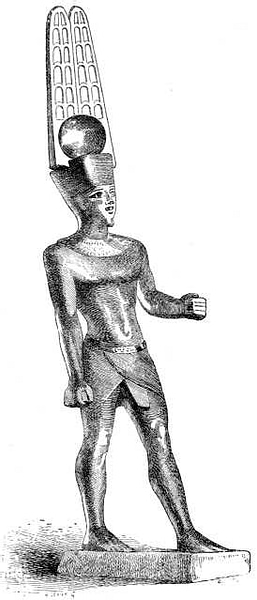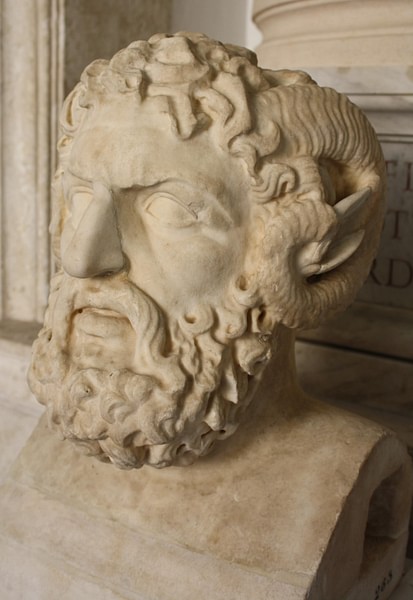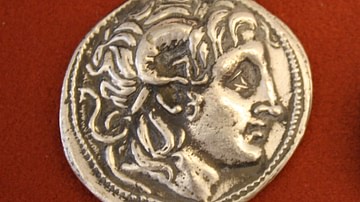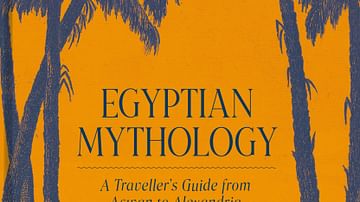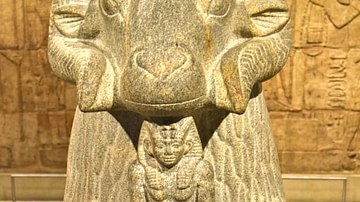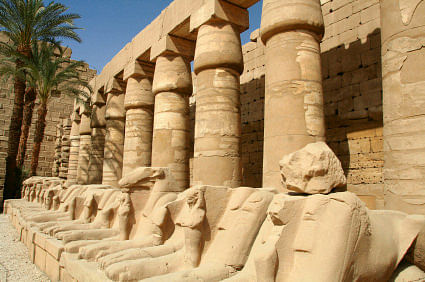
Ammon is the name of a Libyan deity and his oracle in the desert. It became famous after Alexander the Great made a detour to consult the god. The modern name is Siwa.
Oracle at Siwa
Ammon was a Libyan deity, whose oracle was situated in the Siwa oasis, some 500 km west of Memphis, the capital of ancient Egypt. The oasis was also called Ammon. The Egyptians identified the god with their own supreme deity Amun; they called god of the oracle "Amun of Siwa, lord of good counsel". The fact that the site was hard to reach, must have contributed to the feeling that an oracle from Ammon was something special - and therefore reliable.
The place is extremely hot; in the summer, the average temperatures range between 22º C during the night and 37º C during the day, with 48º C being a normal maximum. Until recently, the average annual rainfall was less than 8 mm; the global climate change, however, has changed this, and there have been several heavy rains in the first decade of the twenty-first centuries. This is disastrous, because the houses of Siwa have, for centuries, been made of dried mud. The site is dominated by hight artificial mounds (shali).
Because Siwa is located in a depression, the water table is comparatively high, varying between three meters below the surface to just 50 centimeters. As a consequence, there are many wells: 281 by one counting (e.g., "Cleopatra's Bath" - in Antiquity known as "Spring of the Sun"). Because they produce more water than evaporates, there are large, silty lakes east and west of the main settlement. The gardens of Siwa have always been located near the springs, and produce(d) olives and dates; barley and figs were less important.
Siwa was too far away and too isolated to be a real part of the Egyptian kingdom, but there may have been indirect control. We are certain that during the Nineteenth Dynasty, there was a fort north of Siwa, at Umm el-Rakham on the coast. This proves that the pharaohs were interested in the far west. After the fall of the New Kingdom, Siwa was certainly independent, and it is no strange idea that the Libyan kings of the Twenty-Second and Twenty-Third Dynasties were somehow related to the rulers of Siwa.
Siwa finally became a fully integrated part of Egypt after the domestication of the dromedary had made desert travel easier, for example to Egypt in the east, the Cyrenaica in the northwest and the Nasamones in the west. Among the oasis' exports was salt.
A shrine was built by pharaoh Amasis (reign 570-526 BCE): a political act, intended to gain support from the Libyan tribes that had played a decisive role during Amasis' accession. A similar motive may have been behind the second temple, built by Nectanebo II (reign 359/358-342/341 BCE).
Amasis' sanctuary has been excavated on the acropolis, a shali hill now called Aghurmi, and is remarkable because it does not look like an Egyptian temple at all. In fact, the cult seems to have remained Libyan in nature, something that is more or less confirmed by the fact that the local ruler of the oasis is not depicted as Amasis' subject but as his equal. The cult of Ammon had been Egyptianized only superficially.
Greek Ammon
In the fifth century, the Greek researcher Herodotus of Halicarnassus stated in his Histories that the Lydian king Croesus (560-546 BCE) had offered sacrifices to the god Ammon. It is possible that Herodotus is right; after all, Croesus was allied to Amasis. Besides, by now, the cult had began to spread outside Egypt.
The first Greeks to visit the shrine were people from Cyrenaica, who knew the site through caravan trade. They called the god Zeus Ammon. Of course, Ammon is a bad rendering of Amun, but the name was nonetheless very fitting: ammos was the Greek word for "sand" - in other words, the Greeks called the god Sandy Zeus. His cult spread to the Greek world, and was especially propagated by the poet Pindar (522-445 BCE), who was the first Greek to dedicate an ode to the god and one of the first Greeks to erect a statue to the god. Later visitors included the Athenian commander Cimon, the Macedonian king Alexander the Great, and the Carthaginian leader Hannibal.
Roman Period
In the Roman age, the oracle was not really forgotten, but there were not many visitors. Still, an inscription was found that dates to the reign of Trajan (98-117 CE), and of course there were people living at Siwa. Many tombs with Roman architectural elements have been found, suggesting substantial wealth in the first and second centuries CE. A mud-brick building may have been a Roman fort or a church, and we know of a sixth-century Christian leader named Ammoneki. After Islam arrived, the ancient oracle was converted into a mosque.
